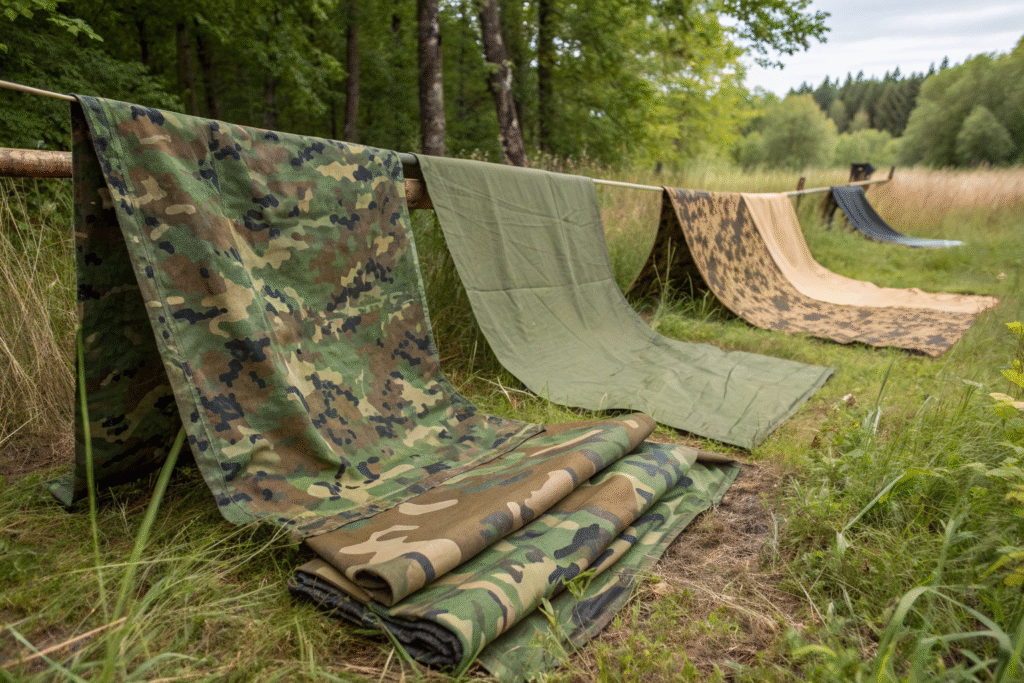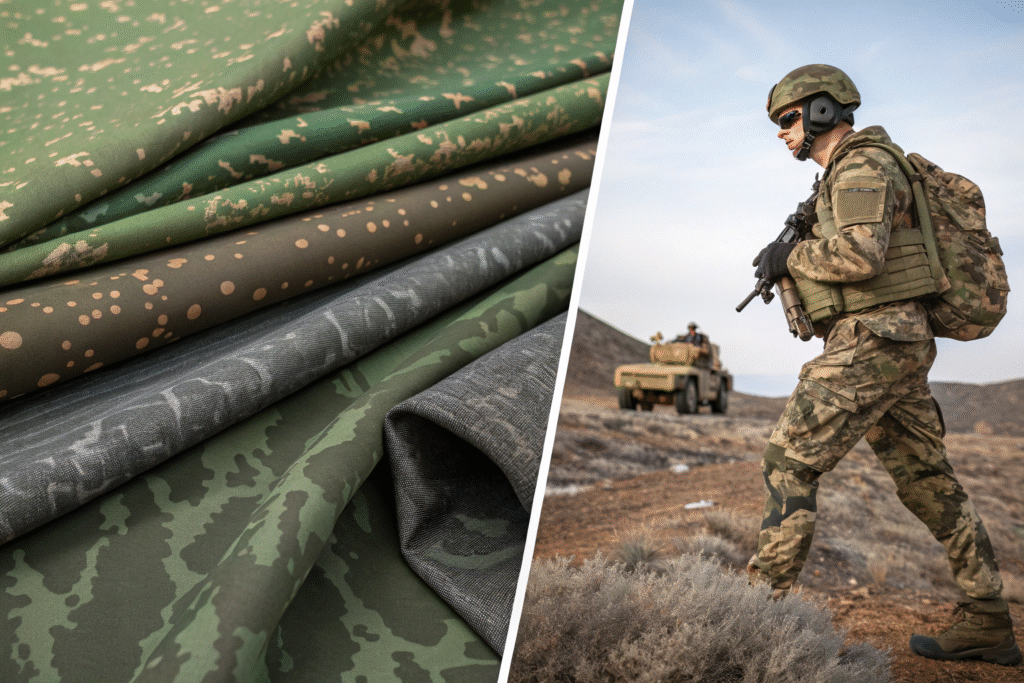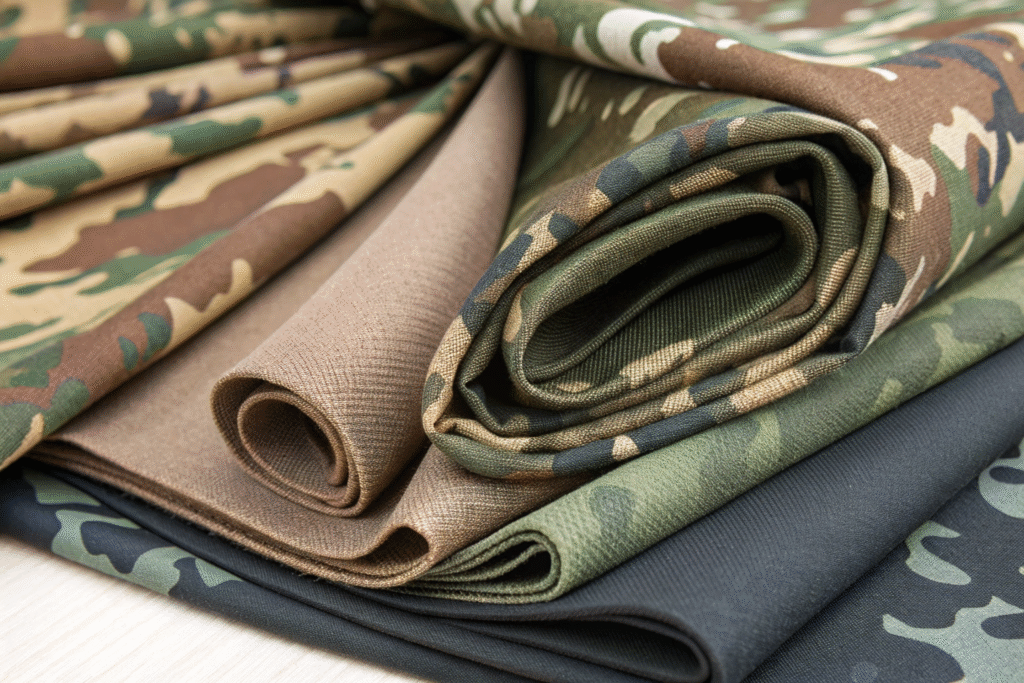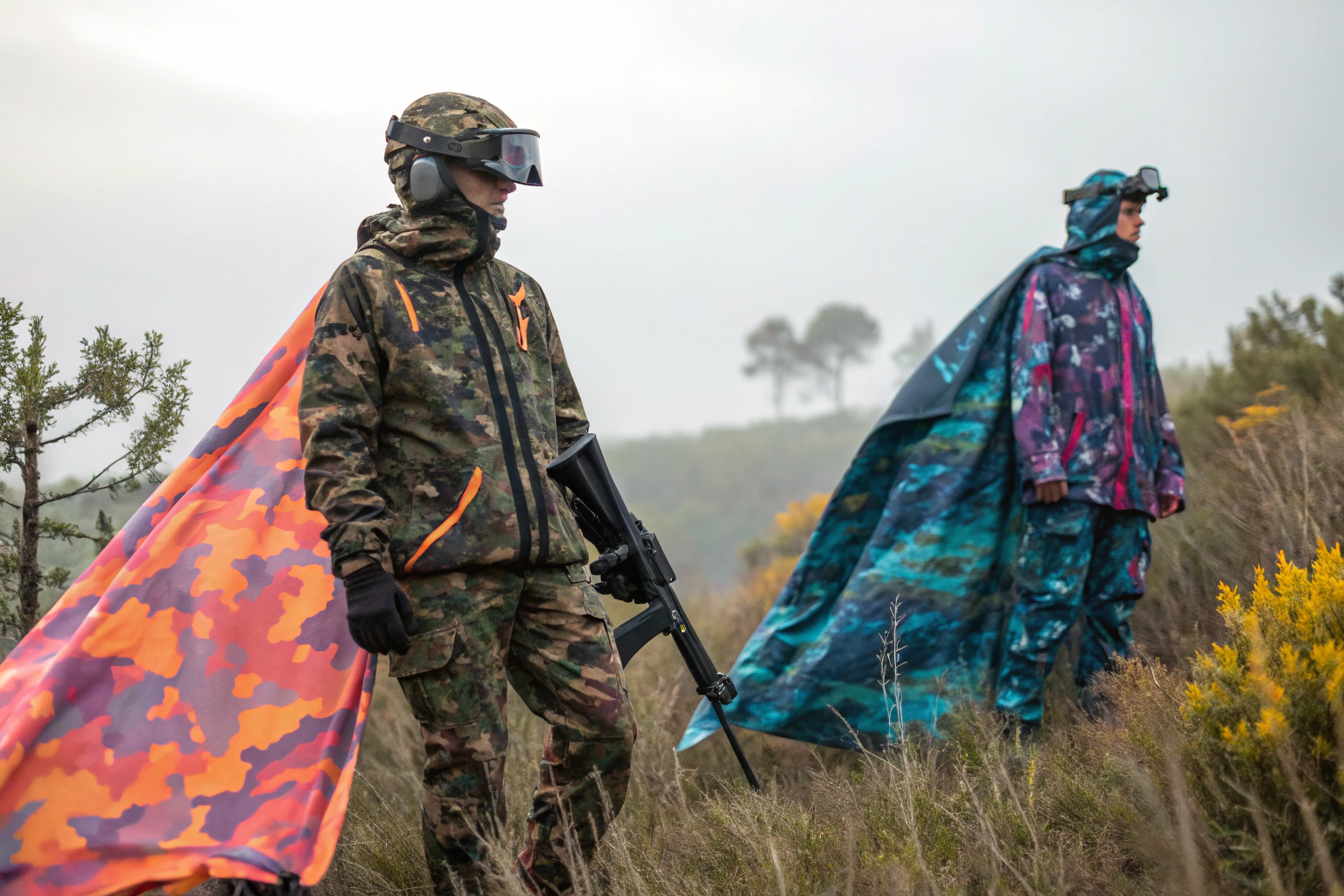In today’s textile market, many buyers face problems with old camouflage products. These products cannot adapt to different surroundings. They are slow, less durable, and not always safe to use. As someone who has worked in the global fabric business for over twenty years, I know how these weak points often lead to wasted money and lost deals.
Self-adaptive camouflage electrochromic textiles give a new answer. These fabrics use electrochromic technology to change color in real time. They help people and equipment blend into changing surroundings. They are different from normal camouflage because they save energy, last longer, and can connect with wearable electronics.
At Fumao Fabric, we believe that innovation must connect with real needs. That is why I want to share the newest research on self-adaptive camouflage electrochromic textiles. In this article, I explain how they work, what new ideas are shaping them, and why they matter for buyers in the U.S., Europe, and other markets.
How Do Electrochromic Camouflage Fabrics Work?
Electrochromic fabrics may sound complex, but the idea is simple. These textiles have layers of conductive and electrochromic materials. When power flows through them, the fabrics change color. This makes them flexible tools for real-world use.
Electrochromic fabrics work by using layers like polyaniline, electrodes, and electrolytes. When voltage is added, the fabric shifts from one color to another within seconds. This gives the user direct control over appearance in real time.

The result is more than just a color change. A jacket can switch from green to brown depending on the environment. A tent can change from desert sand tones to dark evening shades. These uses are clear signs of how the technology adds value in outdoor life, safety, and defense.
What materials are used in electrochromic fabrics?
Most electrochromic fabrics use polyaniline or metal oxides like tungsten trioxide. These materials change color fast and remain stable after many cycles. By doping polyaniline with anion, scientists have improved durability. Tests show 78% retention after 6,500 cycles, compared to only 6.7% before. More details appear in global material science reviews.
How fast can these fabrics change color?
Modern electrochromic fabrics respond in less than five seconds. This speed is critical in defense and outdoor sports. Buyers benefit from fabrics that keep pace with nature. All-in-one electrochromic fabrics made in China are only 80 microns thick. They keep working even after bending, folding, or cutting.
What Are the Latest Innovations in Smart Camouflage?
Recent progress goes beyond simple color change. It now includes custom designs, long use cycles, and wide-scale nets. These improvements make fabrics smarter and more useful.
The newest advances include heat-laminated patterns, more stable polymers, and large camouflage nets. Together, they build a new group of fabrics that link with sensors, batteries, and digital controls.

These steps matter for markets that want more than just printed fabrics. U.S. buyers, for example, ask for products that are both advanced and reliable. Electrochromic fabrics now create real value for defense, outdoor gear, and even fashion.
Can these fabrics create patterns instead of solid colors?
Yes. Heat lamination lets designers add electrochromic zones in camouflage shapes. These zones can copy woodland or desert styles. The wearer can control them as needed. This gives outdoor gear and fashion a new tool for design and function.
What about large-scale non-wearable applications?
There are also camouflage nets. They cover vehicles, tents, and equipment. These nets adjust colors with the environment. For logistics and defense clients, they are strong tools for large-area protection.
How Durable Are Self-Adaptive Camouflage Textiles?
Buyers care about durability. Older electrochromic fabrics often failed too early. The new ones are better. They last longer and perform well under stress.
The new textiles can survive thousands of cycles. They keep their color change ability after repeated use. They are also flexible, strong, and reliable in outdoor conditions.

For buyers, this is not just a technical point. It is about saving money, lowering risk, and building stronger supply chains. This is why many brands now explore this new generation of fabrics.
How many cycles can new fabrics survive?
Some fabrics now last 6,000 cycles or more. They keep over 75% of their performance. This is a huge step compared to earlier versions. You can read details in Royal Society of Chemistry journals.
Do they withstand environmental stress?
Yes. New all-in-one fabrics built on nylon are thin, strong, and resistant to damage. Even after bending or cutting, they still change color. Some projects combine this with AI systems that adjust to light or heat.
Where Can Buyers Apply These Smart Fabrics?
The use of these textiles is wide. They are not only for defense. They are for sports, fashion, tents, and even building design.
Electrochromic camouflage fabrics are already tested in jackets, outdoor gear, and nets. They are also being studied for use in smart buildings. As costs drop, they will reach bigger markets.

This is a chance for buyers in America, Europe, and beyond. With our full supply chain at Fumao Fabric, we can help clients test and use these smart fabrics with full support.
Can these fabrics be used in outdoor fashion?
Yes. Athleisure and outdoor wear brands already explore this field. Sports jackets can now adapt to weather and scenery. Popular names like Lululemon are testing new materials that mix style with function.
Are there industrial or architectural uses?
Yes. Electrochromic building materials help control light and heat. For logistics and construction buyers, large nets or covers give both protection and camouflage. This shows the wider role of smart textiles beyond clothing.
Conclusion
Self-adaptive camouflage electrochromic textiles show how fabrics can change from passive to active. They are durable, fast, and flexible. They are ready for use in defense, sports, and daily life.
At Shanghai Fumao, we want to bring these new fabrics to real projects. If you want to co-develop or source smart camouflage or other advanced fabrics, please contact our Business Director Elaine at elaine@fumaoclothing.com. We can turn ideas into products that create real value for global markets.










